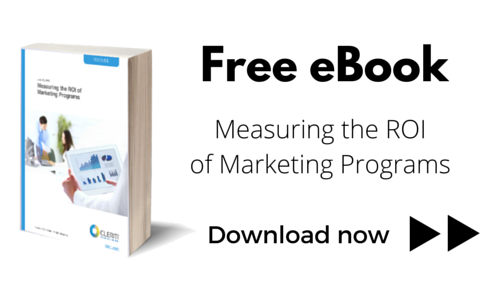- Dec 4, 2015
- By Gina Yeagley
- In Marketing Strategy and Planning
Gearing Up for 2016: Is Your Marketing Team Ready?


As we begin the last month of 2015, it’s important to look ahead. If you aren’t already (and you should be!), now is the time to start planning your marketing for the new year. 2016 is the time to be strategic about your marketing processes. Get your team ready by implementing new developments in web design, brushing up on your content marketing best practices, and aligning your sales and marketing teams.
What’s New in Web Design
Your website is one of your most important assets. Think of it as your elevator speech: It’s often one of the first interactions a potential customer ever has with your business, and it’s where potential customers go to learn what you can do for them. Your website needs to both impress and inform, and many trends are helping marketers do just that in 2016:
- Hero images—large images or series of images prominently displayed—are staying strong. Because these take up the majority of your homepage, hero images can help build your brand, highlight what differentiates your business from others, and even feature a particular service or product. With advances in bandwidth and data compression, users won’t even suffer from slow load times, which is hugely important when you want to retain visitors.
- Video is another choice—in more ways than one. Because the human eye is naturally drawn to movement, you can take hero images one step further by embedding HD video—as long as it’s not distracting to the user—and encouraging website visitors to click for the full video or audio. On web pages showcasing your product or service, you can include how-to, informational, or even testimonial videos. These videos explain your value proposition without forcing the user to read long blocks of text.
- Typography, similar to hero images, is another way to draw a website visitor’s attention. Picking a unique, engaging font relevant to your brand (something retro for your antique shop, for example) and matching it with relevant, useful copy not only creates a fresh, uncluttered site, but it also puts content at the forefront.
- Line icons and ghost buttons create a simple aesthetic and make website navigation easier. Line icons use simple lines and shapes that convey a familiar action or object, such as the “hamburger” menu icon. It’s an image we’ve become familiar with, and it reduces the clutter of the menus of the past—giving you more room for that hero image or typography at the top of your homepage. Similarly, ghost buttons are transparent buttons outlined with only a thin line that support, rather than distract from, colorful background images.
- Sometimes an interesting design is enough to get a visitor to click. While flat design increases ease-of-use for website visitors and increases loading times, semi-flat design maintains the clean simplicity. Consider including 3D design elements such as shadows, gradients, and small animations for added depth. Called material design, and developed by Google, it’s described as “grounded in reality but technologically advanced.”
Get Your Content into Shape
Content Marketing Institute™ recently released the findings of this year’s content marketing survey, and here are some of the highlights:
- Only 30 percent of marketers rated their organization’s use of content marketing as very effective.
- Over half of marketers said their organization is not clear on what effective or successful content marketing strategies look like.
- While a whopping 80 percent of marketers said they have a content marketing strategy, only 32 percent have documented that strategy.
What should you take from this? To start off on the right foot in 2016, it’s important to not only create an effective content marketing strategy, but also to determine how to measure that effectiveness and to document it.
Content marketing can lead to predictable, scalable, and cost-effective traffic and lead-flow generation, but only when used correctly. You already know that your content should align with your customers’ needs and wants, but with appropriate long-tail keywords and meta descriptions you’ll ensure the right person can find your content.
Only 2 out of 10 website visitors will read your entire article to completion, but 8 out of 10 visitors will read your headline. With an attention-grabbing headline, you’re helping those users continue reading your entire piece of content. Every sentence should be a catalyst to help the reader continue on to the next sentence. And even if your readers don’t read every single word (studies have shown website visitors read about 20 percent of an online article), your content should still be designed to give them the maximum amount of information in a scannable format—including a relevant, well-designed call to action.
Content marketing can be a huge boost to your bottom line, and by taking the appropriate steps toward developing a content marketing strategy, you can capitalize on it.
Set Smarketing Goals
If your sales and marketing teams can’t agree, your strategy won’t be as effective. When you are looking to align sales and marketing you first have to start with a clear picture of the customer, which requires knowing all marketing and sales interactions that an individual has with your company. You also have to understand how to identify a customer at each point in the buyer’s journey. This insight allows both teams to share a common definition of your customer and create campaigns around shared goals.
Aligning your sales and marketing teams around the needs of your customers helps both teams identify core areas that need development, or key performance indicators (KPIs). KPIs ensure all team members are working toward the same goals. Marketing supports sales and moves potential customers along the buyer’s journey. Sales solidifies marketing’s message and helps promote a business’s branding, eventually working to convert leads to customers.
Make sure sales is notified when a prospective customer takes an indicative action, such as an alert for when a prospect downloads a buyer's guide or accesses pricing information. And track the results so both teams are cognizant of their goals and how close they are to meeting them. Have both teams meet often to continue to evaluate best practices for your company and continue to define your ideal customer.
Are you ready for the New Year?
You want your marketing process to positively affect your sales for 2016, so it’s time to get strategic about your plan. With these methods, tactics, and goals in place, you’ll be ready to take your marketing to the next level on New Year’s Day.





